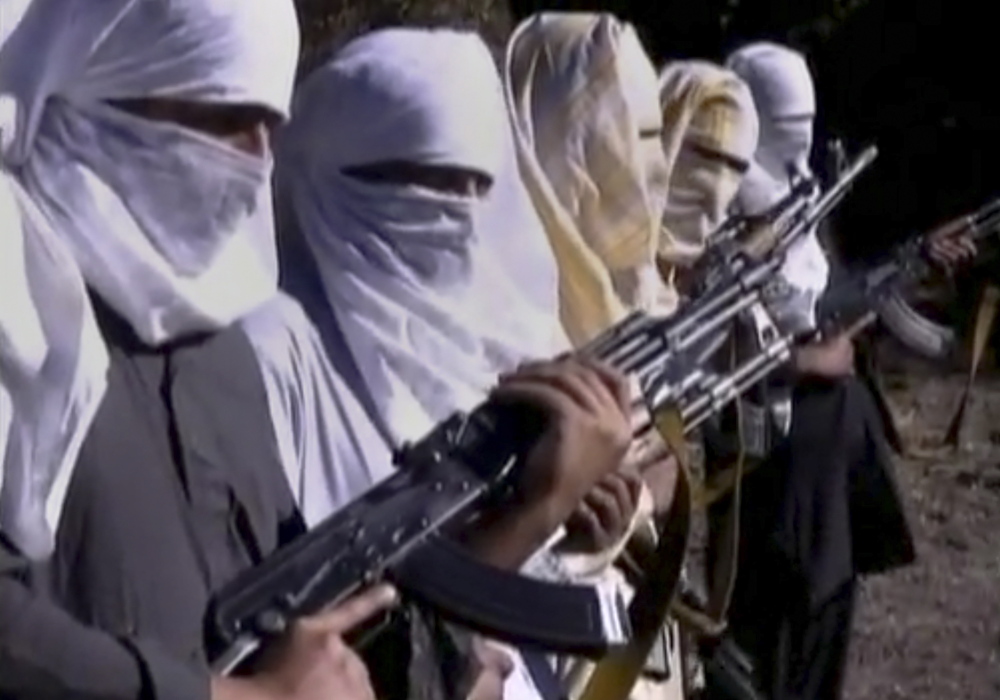KABUL, Afghanistan — Arriving in the western Afghanistan city of Herat in the late 1990s during Taliban rule, Pakistani journalist Rahimullah Yusufzai expected a locked-down, cowering population.
Instead he heard residents openly criticize the militant Islamic movement. At the provincial government offices, he saw clerics come to meet the governor, founding Taliban member Khairullah Khairkhwa, who greeted them in the local Persian, a language most of his comrades didn’t speak.
“He knew these people didn’t really support the Taliban, so he made an extra effort,” said Yusufzai, who has covered Afghanistan for three decades. “He was a friendly man and did not try to force his views on you.”
Khairkhwa, who was arrested by Pakistani forces in 2002 and transferred to the U.S. military prison at Guantanamo Bay, was among the five Taliban detainees released by the White House last week in exchange for captive Sgt. Bowe Bergdahl. Obama critics have said the swap could endanger American lives, with Sen. John McCain, R-Ariz., calling the five Taliban members “the hardest and toughest of all.”
A closer look at the former prisoners, however, indicates that not all were hard-core militants. Three held political positions in the Taliban government that ruled Afghanistan from 1996 to 2001 and were considered relative moderates. A fourth was a midlevel police official, experts say.
The fifth, however, has a darker past. Mohammed Fazl is accused of commanding forces that massacred hundreds of civilians in the final years of Taliban rule before the 2001 U.S.-led invasion. He surrendered to U.S.-allied warlords in November 2001.
“Fazl is the only one of the five to face accusations of explicit war crimes and they are, indeed, extremely serious,” Kate Clark of the Afghanistan Analysts Network, a Kabul-based research group, wrote Wednesday.
The backgrounds of the prisoners, who are confined to Qatar for one year, indicate that they would have little utility on the battlefield after more than a decade in prison. They range in age from 43 to 47. In their absences, the Taliban they served has evolved into a complex and extremely violent insurgency that has been decimated – although far from defeated – by U.S. counterterrorism.
Their primary value, say analysts, is as a symbol of the Taliban’s ability to negotiate on equal footing with the United States.
“It’s a boost in terms of morale, but I doubt whether this would make any kind of practical impact, at least in the short term, to the conflict inside Afghanistan,” said Alex Strick van Linschoten, who has co-written three books on the Taliban. “All these guys are pretty old now.”
Administration officials dispute allegations that the five were the “worst of the worst” of the Taliban, saying they were not a threat to the United States and that 30 detainees who are considered a danger will still face trial.
“These were not good guys. I am in no way defending these men. But being, you know, mid- to high-level officials in a regime that’s grotesque and horrific also doesn’t mean they themselves directly pose a threat to the United States,” State Department spokeswoman Marie Harf said Thursday. She accused critics of having political motives.
U.S. officials, who had sought for years to swap the Taliban detainees for Bergdahl, had described the men as violent extremists in prison documents obtained by the anti-secrecy group WikiLeaks.
One of the five, Mullah Norullah Noori, is listed as “a senior Taliban military commander in (the northern city of) Mazar-i-Sharif during hostilities against U.S. and coalition forces in late 2001” who was “wanted by the United Nations for possible war crimes, including the murder of thousands of Shiite Muslims.”
But in war crimes reports conducted by the United Nations, Human Rights Watch and the independent Afghanistan Justice Project, Noori’s name never appears as a suspect.
Khairkhwa, the governor in Herat, is described in U.S. documents as “a hard-liner” in his support of Taliban philosophy.
The description is sharply at odds with that of journalists and analysts who met him in the late 1990s.
Another of the freed men, Abdul Haq Wasiq, worked for a relative who had been appointed the head of the intelligence service, and when the deputy fell ill, Wasiq took over the post, according to his prison file.
After the U.S.-led invasion, Wasiq offered his help to U.S. forces in locating Taliban leader Mullah Mohammed Omar, but was arrested instead.
The last of the men released, Mohammed Nabi Omari, was a police chief in Zabol but never served in the Taliban leadership, according to Clark and the Afghanistan Analysts Network. The U.S. description of Omari, Clark wrote, is “nonsense.”
Copy the Story LinkSend questions/comments to the editors.



Success. Please wait for the page to reload. If the page does not reload within 5 seconds, please refresh the page.
Enter your email and password to access comments.
Hi, to comment on stories you must . This profile is in addition to your subscription and website login.
Already have a commenting profile? .
Invalid username/password.
Please check your email to confirm and complete your registration.
Only subscribers are eligible to post comments. Please subscribe or login first for digital access. Here’s why.
Use the form below to reset your password. When you've submitted your account email, we will send an email with a reset code.